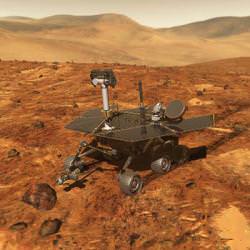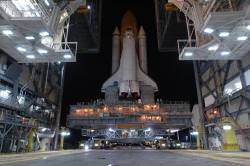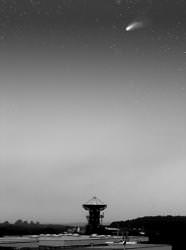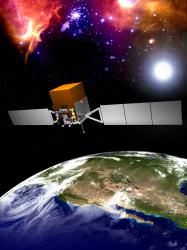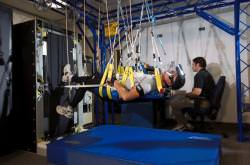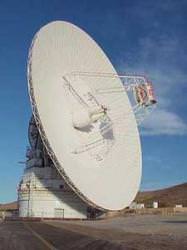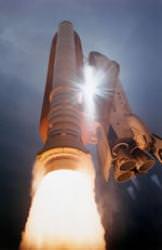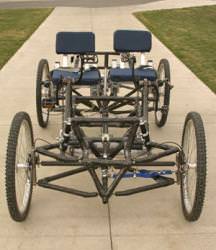To save the Mars Expedition Rover (MER) program some cash, controllers will be forced to switch one of the four-year old rovers into “hibernation mode”. NASA wants to cut $4 million from the MER budget, so extreme measures are needed. Sadly, operations will need to be limited and it has been announced today that activities will be stopped on Spirit for the coming weeks. Mission scientists are obviously demoralized.
[UPDATE (03/25/08): NASA has now announced that it has “absolutely no plans” to turn off the Mars rovers, only hours after mission scientists announced they had new directives from the organization to cut $4 million from budget cuts. When more news is forthcoming I will post an article as to what is going on… ]
This appears to be the case of a mission being too successful for its own good.
The MER project was only intended to last for a few months, but the two rovers, Spirit and Opportunity, have surpassed all expectations and continued to explore the planet for four whole years. They are so efficient, that they have braved the worst dust storms, battled through technical issues and even freed themselves from quicksand, there seems to be nothing standing in their way of these super robotic troopers…
Except NASA budget cuts.
When the money runs out, the rovers have to be shut down and this is exactly what is going to happen to Spirit, currently located on a sunny slope at Gusev Crater. Even though the rovers are in the middle of an extensive exploratory phase of the Martian landscape, a NASA directive must be enforced to save $4 million from the project’s $20 million annual budget.
Shutting down Spirit isn’t the only budget-saving measure to be taken. Opportunity’s tasks will now be severely cut; limiting commands to be sent from controllers to every other day, rather than daily.
MER controllers are said to be very demoralized by these measures. Although budget cuts can never come at a “good time”, the timing of this announcement is terrible as both rovers are operating at full strength and still have vast amounts of potential.
The problem is that NASA is currently being stretched to accommodate other Mars missions currently in operation. But when should a highly successful mission like the MER project end? Up till now, most Mars surface missions are good until they break down. In the case of Spirit and Opportunity, neither is showing many signs of breaking. So for now, controllers will have to hover by the “off” switch while budget requirements are met.
Source: PhysOrg.com

